RedMere Active HDMI Cables
I could go on and and about the failings of HDMI in the custom installation market. Every time I speak with an installer I hear the same stories about HDMI failures, cables coming out of the backs of gear, delay issues and—most commonly—problems with getting video to travel over longer distances. With analogue cables this wasn’t a real issue. With digital HDMI, everything was turned on its head. And then came RedMere active HDMI cables. Up until a short time ago, HDMI could only be sent over long distances via fiber optic conversion or the use of a rather expensive and unreliable-at-best balun. Both of these solutions held their own challenges (not to mention costs). The biggest problem, however was the guy in the middle.
The poor installer who really only needed to go about 60 feet or so. He was left out in the dust. Analogue HDMI couldn’t do it, and the active solutions were cost-prohibitive. Considering that same installer was able to terminate his own 60-foot long component video cable just a few short years ago, the inability for HDMI to go long distances or be field-terminated made for a big change in how jobs were costed and increased the advance time needed to procure the proper materials to get the project completed.
But now, with RedMere technology, longer HDMI runs are within reach—and not terribly expensive either.
Problems RedMere Active HDMI Cables Solve
Here are some problems active HDMI solutions like those from RedMere solve:
- Thin TV Mounting
Since flat TVs are all the rage, flatter mounts that sit closer to the wall are also becoming more popular. The trouble is, larger-diameter HDMI cables don’t like to bend. Thinner cables from HDMI cable manufacturers using these new RedMere chips let you bend them more easily and really get your televisions closer to the wall. This is a huge aesthetic update as well as a decrease in cable-bend-induced cable failures.
- Solving the “Intermediate Distance” Problem
As hinted at above, the custom installer that needs a cable between 20 and 75 feet (and even longer) can now use less expensive active HDMI technology to achieve his goals. It’s no longer required to use a balun and go the dual-Cat5e route or convert to fiber optic just to make a basic run.
- Keeping Up With Technology
While an embedded chip suffers from the same potential to become obsolete as baluns and other converters, an active HDMI cable is more reasonable to upgrade than the other solutions. That makes it an easier choice when it comes time to upgrade to that next big technology (this may not be the case when the cable is located in the wall, however).
- Simplification of the Installation Process
Since active HDMI cables are 100% self-contained, there’s no need for external power supplies, boxes or adapters to make them work. You just plug them in and go. In the world of home theater and even custom install, simple is always appreciated.
Characteristics of RedMere Active HDMI Cables
These new active HDMI cables from RedMere are really thin—or at least they have the potential to be, depending upon the manufacturing technique and how long the cable needs to be. Some RedMere cables measure just 2.5 mm in thickness (the cable diameter). The first RedMere cables contained the company’s MEA1689 integrated chipset that delivered up to 3.4Gbps per channel (10.2 Gbps total). The second-generation chipset is the PRE1692 which delivers 3D and ARC (Audio Return channel) functions as well as some improvements to how cable attenuation is compensated for. But RedMere didn’t stop there. Their PRA1700 module bumped up their active EQ even further and drives up to 18 Gbps performance out of a self-powered cable technology. This model is fully compliant with the latest High Speed HDMI cables with Ethernet.
Given that RedMere is coming out with newer and updated modules, it’s important to pay attention to the labeling on the cables you buy. Make sure it has the distance rating and the features you require. For all of these cables, the module is embedded right inside the sink-side (display-side) casing of the active HDMI cable connector. Since these cables are directional in nature, you do have to pay attention to your cable runs so that the sink side of the cable ends up at the display.
[top-seller category_id=’33’ product_count=’4′ title=’Top Selling HDMI Cables’]
A Quick Breakdown of Current RedMere Embedded Chipsets:
RM1689 Chipset Features:
- Enables CAT 2 High Speed HDMI Cables with Ethernet
- Data rates up to 3.4Gbps
- No external power required
- Integrated equalizer
- Cable skew correction
- 16-bit color resolution at 1080p
- Internal voltage regulator
- On-chip 50 Ohm input termination
- Auto self-test for cable production
- 32 pin QFN
PRE1692 Chipset Features:
- Second generation ultra-compact long cable module
- 1080p up to 30m
- Audio Return Channel supported
- No external power required
- Fits behind sink device
- Auto self-test for cable production
- Supports 1.48 Gbps up to 30m, 2.25 Gbps up to 25m, 3.4 Gbps up to 20m
PRA1700 Chipset Features
- 18Gbps performance
- Compliant with High Speed HDMI Cables with Ethernet at minimum
- No additional power supply required
- Integrated MagnifEye Active equalizer
- Fits behind sink device
- Multi-function LED support
- Compatible with standard type-A HDMI connectors
PRA1602 Chipset Features
- Compliant with High Speed HDMI Cables with Ethernet
- Integrated MagnifEye Active equalizer
- Compact module design
- Auto self-test for cable production
- Compatible with standard type-A HDMI connector
RedMere Active HDMI Cables are Thinner
We have several RedMere active HDMI cables in-house. One of them can bend 180 degrees within a 3/4″ radius and measures just over 1/16″ in thickness. Additionally, the HDMI connectors aren’t oversized, measuring just 1-1/2″ long at each end. Not all active HDMI cables are this thin, but the days of 22 gauge and 24 gauge HDMI cables are long gone once you put a chip inside to deal with the required data transmission issues.
Pricing
The market varies with respect to active HDMI cable prices, but you can expect cables to start as low as $15 and rise upwards of $150 depending upon the manufacturer’s markup and the length needed. Currently, these active cables are manufactured by many retailers and they really do look to be the future of the format—especially since HDMI Licensing keeps changing the game every year or so with updated HDMI specs and speed requirements that make passive cables over 10 feet in length all but useless.

Conclusion
In our own internal testing, RedMere has surpassed all expectations for active HDMI technology. They solve a big problem created by the moving target created by HDMI’s neverending “spec-creep” and the inability for passive cables to adapt at even medium lengths. RedMere active HDMI technology simply works. With technologies like ARC, 3D and 4K—having a cable that “just works” is going to be a big deal for both consumers and custom installers alike.

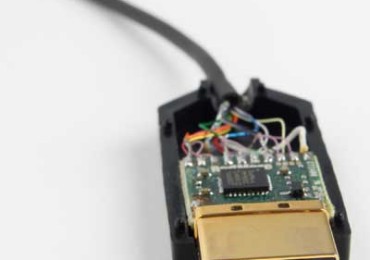
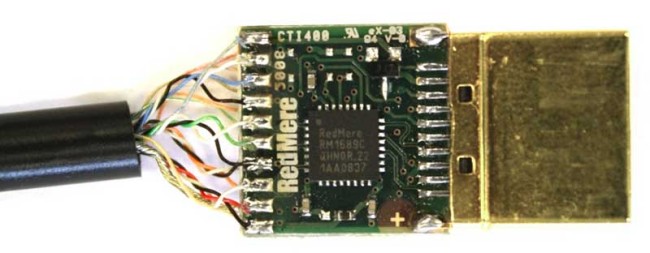
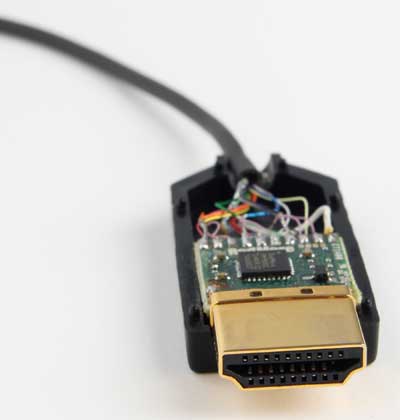
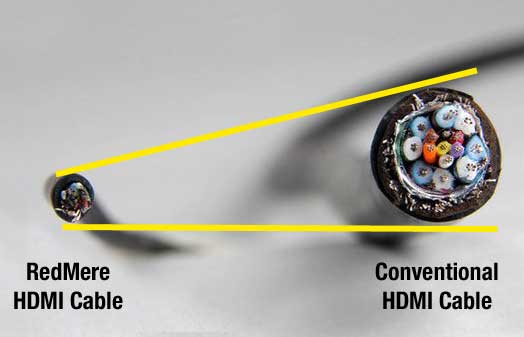
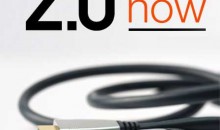

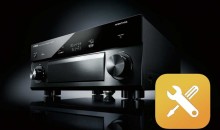
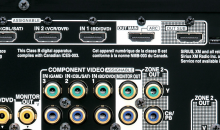

I am concerned about the reliability of the chip. I am building a new home and wiring behind wall. If it blows, how difficult would it be to replace the existing connector with a new one?
This is a legitimate concern. There are a couple of schools of thought depending on how far of a run you need to make. One, if you’re really concerned with lightning, etc, then you could run an optical HDMI cable, which has electronics at either end, but not in the cable itself. This way you can replace the electronics on either end of a worst-case scenario occurs. The same works with a Cat5X balun system, however the newest products in both categories likely don’t quite have what it takes to handle the bandwidth requirements for all 4K applications, so you might need to wait on this if it’s a concern. Check out this article for some issues you want to be aware of when installing something that’s more or less “future-proof”: HDMI 2.0 Balun Technology.
This is very helpful info. I have to a run a HDMI cable 15m in the office and I need it to be 100% reliable. I’m going to look into picking one of these up.
I have heard some concerns about “daisy-chaining” active cables, and not to do so. Does this mean not using an active one from STB to Receiver, then from Receiver to TV, or do they mean actually using them with extensions?
Running two active cables end to end is not recommended.
That was a good, non-hyped write-up. The only thing it didn’t cover, which I thought I knew about at some point in time, was the rated maximum length. Yes the technology can provide better quality signal, but also, what maximum length can it provide at standard rated quality? As if that isn’t an exceptional anyway.
So, there is a hidden problem with some (perhaps most) active cables. That is an issue with getting adequate power from all sources. I began using them in classrooms, where they fed HDBaseT extenders. They were chosen because of their thinness and physical flexibility; which make them ideal for connecting directly or through adapters.
We have run into many situations where laptops and portable devices would not connect through their HDMI ports (MacBooks are a major culprit) yet work perfectly through an adapter when a DisplayPort or mini-DisplayPort is available. The conclusion that a number of tech’s have come around to is that; many portables are optimizing their HDMI port to preserve battery life and thus cheating on milliamperes wherever possible. It seems that DisplayPort and Thunderbolt may be less likely to cheat and are thus better in the case of being able to power active cables.
Just a heads-up to those who want to use active cables. We are in the process of getting rid of them in any situations where we cannot control what will use them to feed our systems. Personally I still like them at home, I just try to be aware of how I am feeding them. Definitely in an environment where a wide range of devices will connect through them; not such a good idea.
Great feedback!
Glad to finally find someone with the same problem I just started having. Do 50′ Non-Redmere cables work on Macbooks without a booster?
Possibly. They’d need to be thicker gauge and well-made.
Writing this in 2019… Are there any specific Active HDMI and/or DisplayPort cables which you would personally recommend for maximum reliability in a home office setup? Preferably not too expensive.
With the availability of HDMI 2.0, is Redmere still relevant? Or they’re just equal?
Absolutely relevant—even more so as the spec keeps allowing for more throughput in the cable.